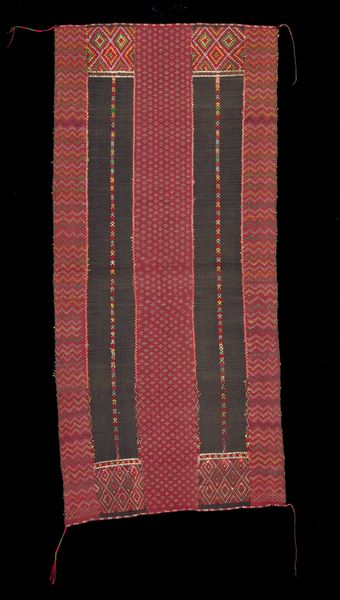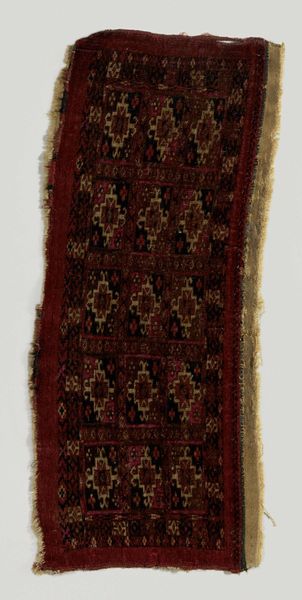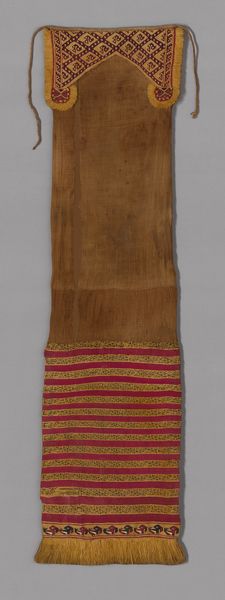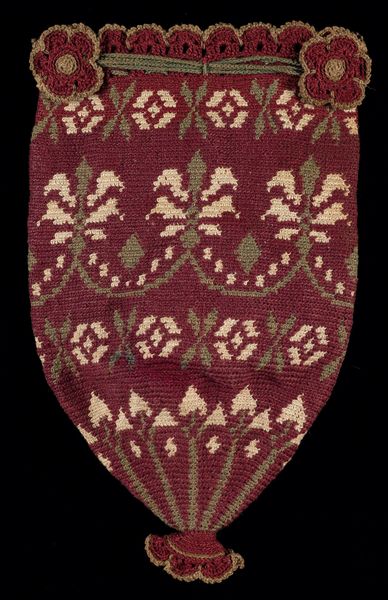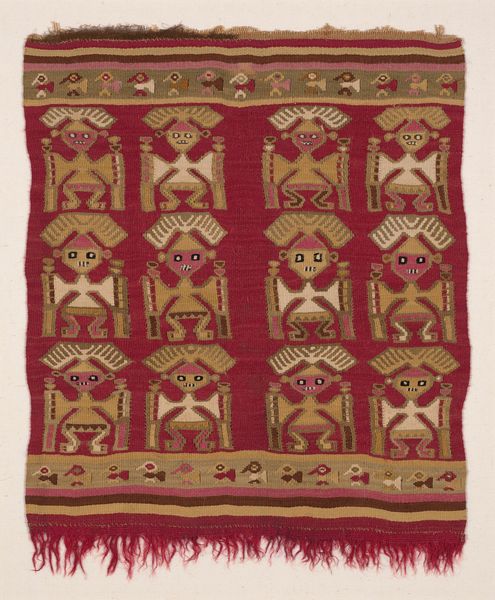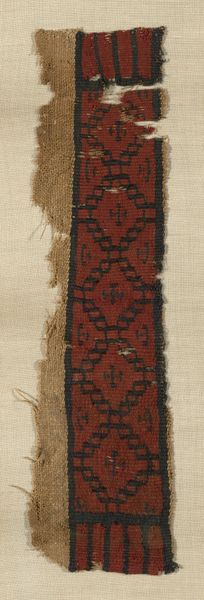
fibre-art, weaving, textile
#
fibre-art
#
weaving
#
textile
#
figuration
#
indigenous-americas
Dimensions: 99.7 × 19.7 cm (39 1/4 × 7 3/4 in.)
Copyright: Public Domain
Curator: Here we have a fragment of a Chimú loincloth, probably dating from 1250 to 1470 AD. The Chimú culture flourished on the northern coast of present-day Peru, and they were master artisans, particularly renowned for their textiles. Editor: It’s strikingly vibrant for a piece so old. I’m drawn to the textures—the rich red of the fringe against the woven patterns. There's something very tactile about it, even viewed from behind glass. Curator: Indeed. The fragment reveals sophisticated weaving techniques and a structured design. The central band contains linear patterns and figurative representations arranged in a symmetrical order, indicative of Chimú artistic conventions and their emphasis on order and societal structures. Editor: Knowing it was once a loincloth really contextualizes it. Thinking about the labor involved in producing something that was intended to be worn, not just admired, it’s pretty significant, right? What would someone have had to go through in terms of time and material to produce the garment? Curator: Absolutely. Textiles were not merely functional items; they held significant social and political weight. The quality and complexity of a textile reflected the status and power of the wearer. The motifs are also revealing, providing us insight into the Chimú belief system and social hierarchy. Editor: What’s striking is that the materiality would’ve meant everything. Imagine the worth of the fibers and dyes, considering the climate and region? Curator: Undoubtedly. We can learn about trade networks, access to resources, and the level of specialization within Chimú society by examining these very components of the loincloth. And consider how institutions such as royal families could retain power with things such as raw materials. Editor: Looking closely, one appreciates the skill in preserving these fragile fibers, showcasing past lifeways for public viewing. It brings to the fore questions about colonialism. It’s exciting and meaningful to see it given pride of place within this museum context, thousands of years after it was first made. Curator: A testament to its enduring value and significance, offering invaluable glimpses into a complex, vanished civilization. The museum allows all to ponder the artwork’s creation, and also allows a look at the dynamics of ancient Andean cultures. Editor: Absolutely. And it asks us to contemplate the conditions of its making and how materials informed its value in its culture, in contrast with how we consider the item today.
Comments
No comments
Be the first to comment and join the conversation on the ultimate creative platform.


